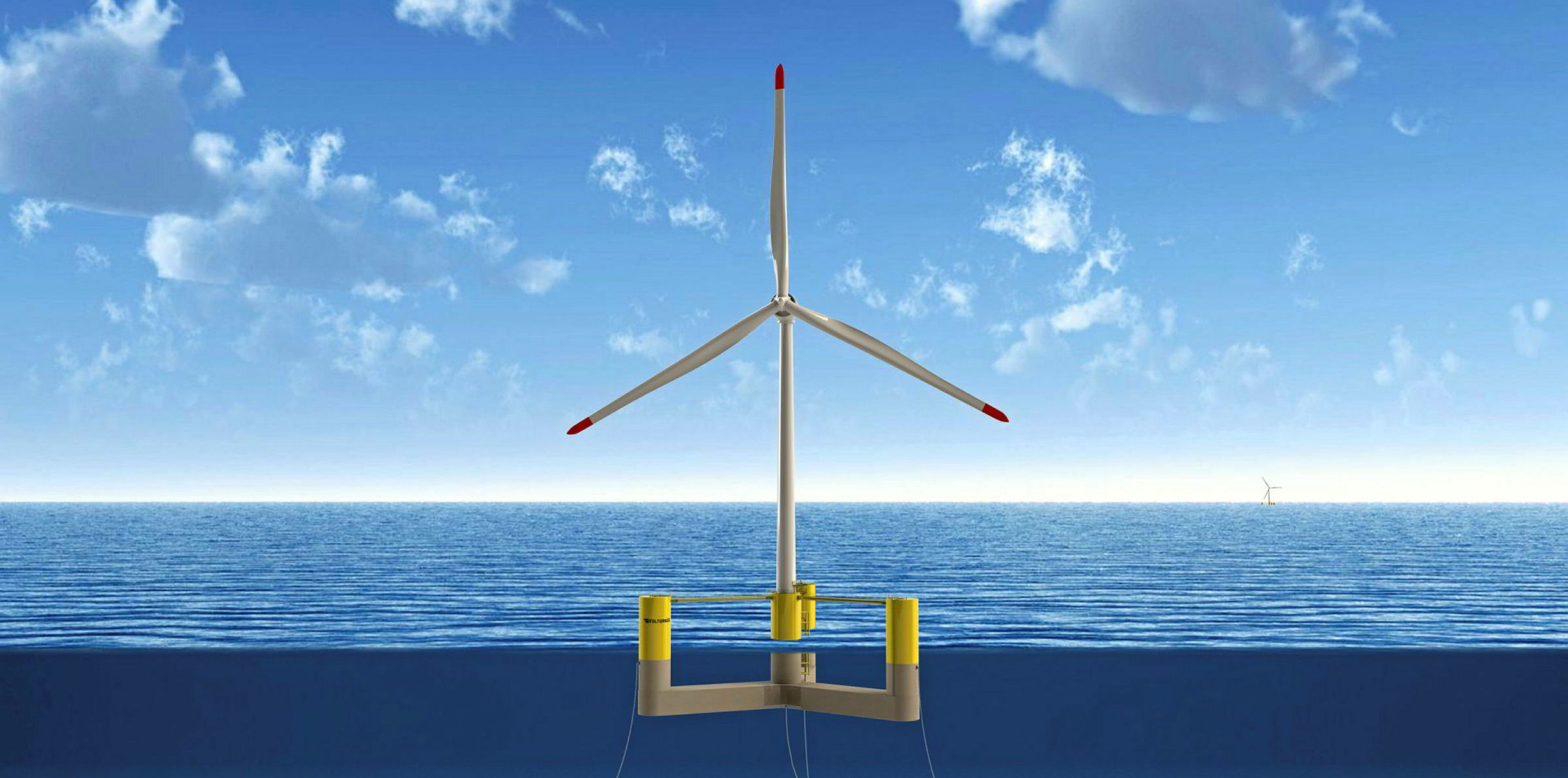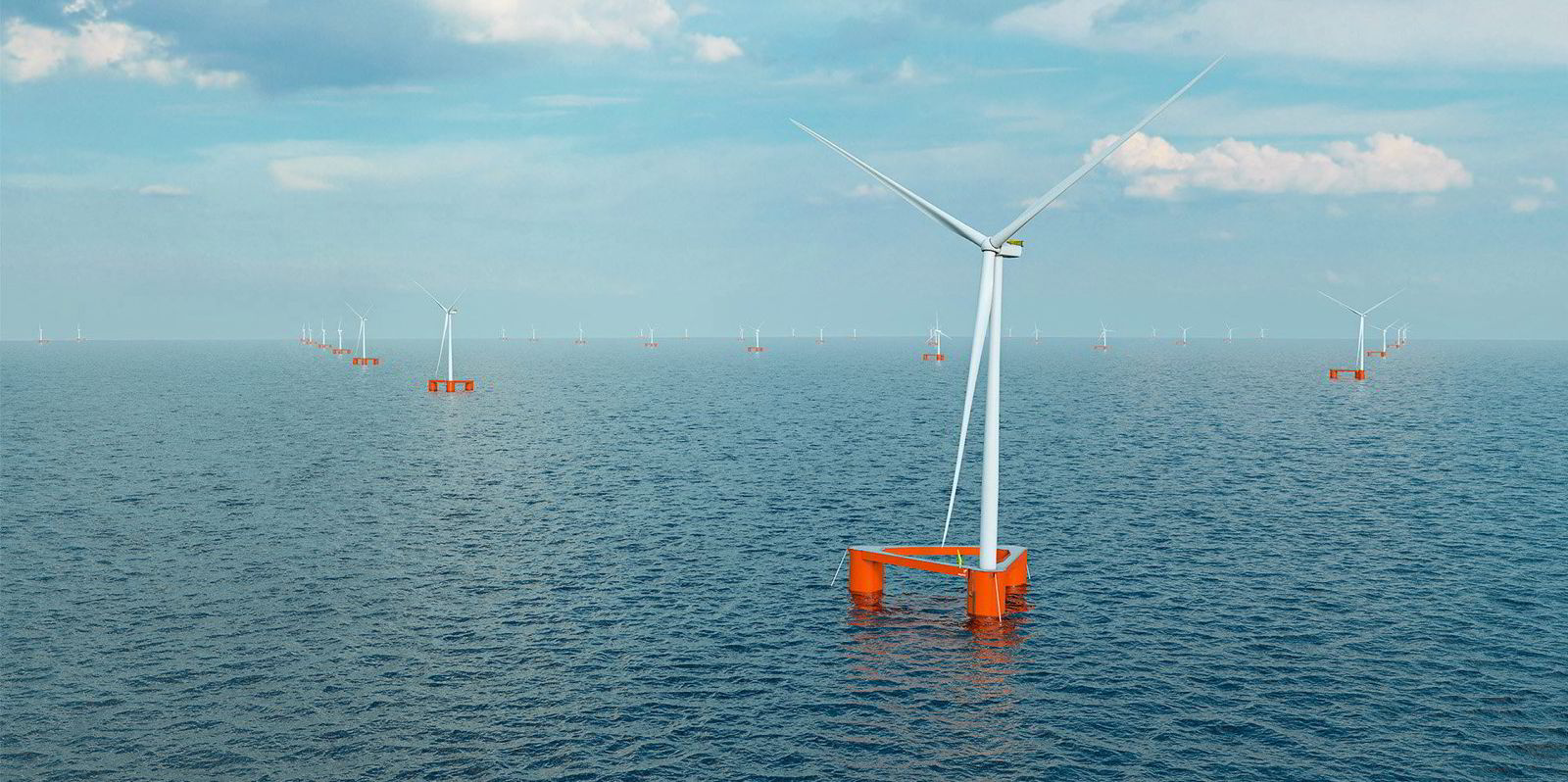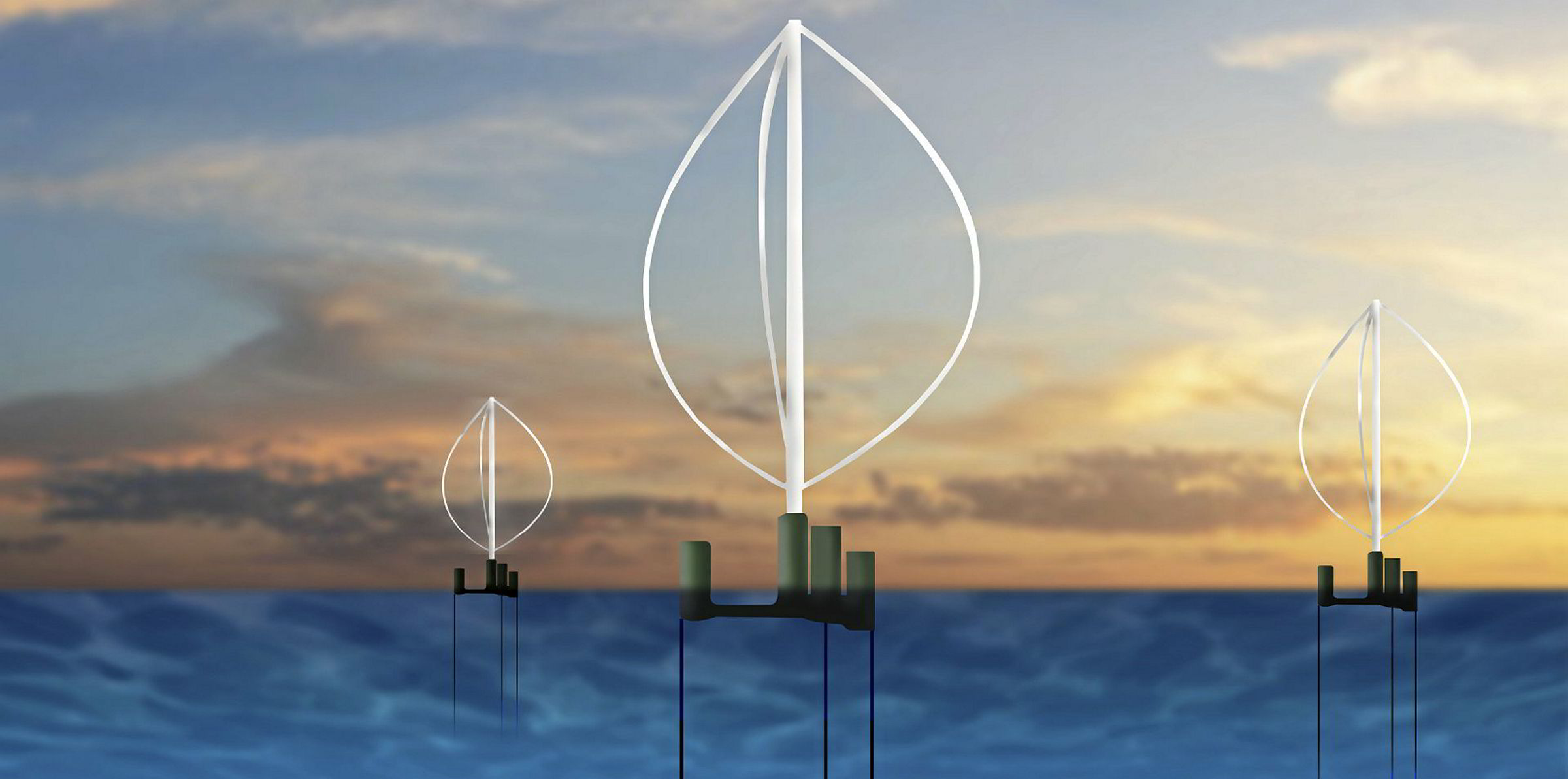Mitsubishi-owned Diamond Offshore Wind and developer RWE Renewables have joined the University of Maine’s pioneering Aqua Ventus project with the aim of bringing the US’ first industrial-scale floating wind unit online by 2023 off the coast of the state of Maine.
The tie-up, which will be known as New England Aqua Ventus, will invest $100m and take on permitting, construction, assembly and deployment responsiblities, while UMaine’s Advanced Structures and Composites Center will handle ongoing engineering on the pilot, which will see a 10-12MW unit installed in 150 feet (46 metres) of water off Monhegan Island in the Gulf of Maine.
“The experience and investment that RWE and Diamond Offshore Wind bring are really unparalleled in the strength they will give to the project,” Habib Dagher, executive director of the UMaine Composites Center, told Recharge. “And, if all goes well, it will be mean we will get the first full-scale floater off the US into the water within three years.”
He added that, in the longer-term, as the “design is ideally suited for deep water deployment anywhere, [the project] has the potential to play a significant role in global efforts to decrease dependence on fossil fuels” as the floating wind industry expands.
Wojciech Wiechowski, project manager for Aqua Ventus at RWE, which earlier this year announced it would partner with Spanish floating wind outfit Saitec to test a full-scale model of its SATH concept in 2021, said: “This is a very exciting project and exciting technology. We have a lot of experience in fixed-bottom [offshore wind] project but want to become a global leader in floating wind and want to achieve this by a stepping-stone strategy, so this is a great opportunity for us to build our capabilities.”
The platform technology at the heart of Aqua Ventus, a concept dubbed VolturnUS, is a multi-patented, ‘segmental’ concrete semisubmersible concept based on modular bridge designs, which was piloted at 1:8 scale in during 2013-14 and became the first offshore turbine to deliver power to the US grid.
“The technology is specifically designed to be built locally – this is how we started conceptually with the design,” noted Dagher. “Any construction company that has experience build concrete bridges will be able to build [the VolturnUS] in almost any location in the country.
“We are taking [a design] that has been proven in any number of places around the world [for bridges], even over salt-water, and adapted this technology to floating wind – just turned upside down. And for a market that doesn’t have the capacity to build and handle large steel structures [such as have been used in other floating wind projects such as Europe’s Hywind Scotland and WindFloat Atlantic arrays].”
Wiechowski added: “We see the VolturnUS as perfect for [the supply chain in] Maine and the Gulf of Maine [as an operational site]. The concrete segmental production is a strength of the technology.”
Diamond Offshore Wind and RWE’s involvement marks another step in the rebirth of Aqua Ventus, which almost sank without a trace after anti-renewables former Maine governor Paul LePage spiked an already-agreed power purchase agreement (PPA) for the development.
The political tide turned for the project last autumn, when the state’s Public Utilities Commission reversed the decision, under instruction after the current governor, Janet Mills, who had signed off on supportive legislation.
“The strength of Maine’s economy, the preservation of our natural resources, the long-term health and well-being of our communities and of future generations depend in great part on our transitioning to clean energy and tackling the threat of climate change,” Mills said of the announcement.
“This new public-private partnership joins world-class offshore wind developers and UMaine and puts us on track to be home to the nation’s first floating offshore wind project, reflecting the major economic growth opportunity of the clean energy economy.”
The delays to Aqua Ventus have ultimately proved to have something of a silver lining, as the project is now moving forward with plans to use one of the industry’s top-of-the-range offshore turbine models – rather than the pair of 6MW units originally scoped out for the pilot.
Fitted with a 15MW machine, by the US National Renewable Energy Laboratory calculations, tip he flagship could produce at a levelised cost of energy of under $60/MWh, on par with current bottom-fixed wind farms. A turbine supplier is expected to be set by 2022.
“For generations, Maine has been a national leader when it comes to using our natural resources sustainably to create jobs, protect our environment and power our economy,” a group of senior state politicians, led by Republican senator Susan Collins, said in a statement. “UMaine’s floating deepwater offshore wind project carries on that tradition.
“We applaud the public-private partnership launched today, which will accelerate development of [this] innovative technology and create jobs. Maine’s offshore wind resource potential is 36 times greater than the state’s electricity demand, making this project so significant for Maine's clean energy future.”
The wider potential for floating wind power in supplying electricity to Maine – where nearly two-thirds of households use fuel-oil as their primary energy source, according to the Energy Information Administration – is tantalising – not least because 60% of the state’s vast total offshore wind resource, estimated at 156GW, is in waters too deep for conventional monopile and jacket foundations.
Along with Aqua Ventus, UMaine’s Advanced Composites Center is advancing a series of projects based on grants from the Department of Energy, including $1.4m to design an ultra-lightweight concrete floating wind power concept fitted with technology first developed by NASA to dampen vibrations in rockets.
Some 70GW of floating wind power plant is forecast be turning by 2040 around the world – a near-1,000-fold expansion of the current fleet – as international supply chains take shape to support development of commercial-scale projects around the world, including off many island nations, according to new market analysis from UK-based international low carbon advisory body the Carbon Trust.
In the US, most attention has focused on the Pacific play, with the US Bureau of Ocean Energy Management (BOEM), which oversees development of US outer continental shelf waters, estimating three ‘call areas’ off California could hold up to 8.4GW of capacity alone. A first commercial lease auction was originally scheduled for this year, but now foresees the tender being held in 2021.
But BOEM is also working on a “white paper” to look at the prospects for floating wind power developments off the country’s northeast coastline, raising hopes that projects in the Atlantic could be added to the clutch of arrays moving ahead off the West Coast.
While there is no active offshore wind call area in the Gulf of Maine, BOEM last year established a task force to provide critical information to the decision-making process for planning future offshore renewable energy development opportunities there.
The Gulf of Maine Task Force includes representation from New Hampshire, Massachusetts, Maine and federally recognized Tribes in the area.
Wood Mackenzie in a report Tuesday anticipated that 1,416 sq km (350,000 acres) of area in the Gulf of Maine could go to auction in 2022 to support renewable initiatives.
While Maine is targeting to install 5GW offshore wind by 2030, the consultancy believes the timeline for floating offshore wind installation there "is assumed to be from 2030 to 2035."






